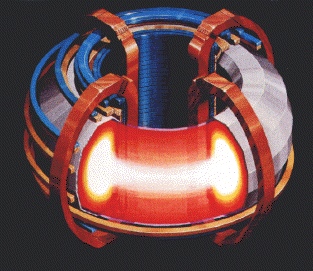China's Artificial Sun
Hefei will become the first institute in the
world to have built an all-superconducting non-circular section nuclear fusion
experiment facility -- an artificial sun.

This is an area of power generation I’ve come back to several times in the decades since I worked for a vendor to contractors building nuclear fission-based power plants in the US. Though my experience with that industry was pretty negative, it never set aside my view of the capabilities of the science involved — and especially the potential of the following generations of research into nuclear fusion-generated power. Notably, we can avoid most of the problems associated with radioactive waste.
An experimental device that aims to generate clean energy using nuclear fusion will be [completed] in the next few months in Hefei, capital city of East China’s Anhui Province.
The new device will be an upgrade of China’s first superconducting Tokamak device, dubbed HT-7, which was built by the plasma physics institute, in partnership with Russia, in the early 1990s.
HT-7 made China the fourth country in the world, after Russia, France and Japan, to have such a device.
Scientists believe that deuterium, extracted from seawater, can be used to produce enormous amounts of energy from a deuterium-tritium fusion reaction under huge temperatures of 100 million C.
After nuclear fusion, the deuterium extracted from one litre of seawater will produce energy equivalent to 300 litres of gasoline.
The European Union, the United States, Russia, Japan, South Korea and China are partners in the Cadarache project in France — which is just breaking ground after 18 months of political wrangling, mostly between France and Japan on where the latest ITER project would be built. It’s much more expensive than the Chinese project. Presumably it’s larger.
I hope to see these experiments bearing fruit, sooner or later. We’ve been waiting a long time.
Posted: Mon - January 23, 2006 at 07:39 AM